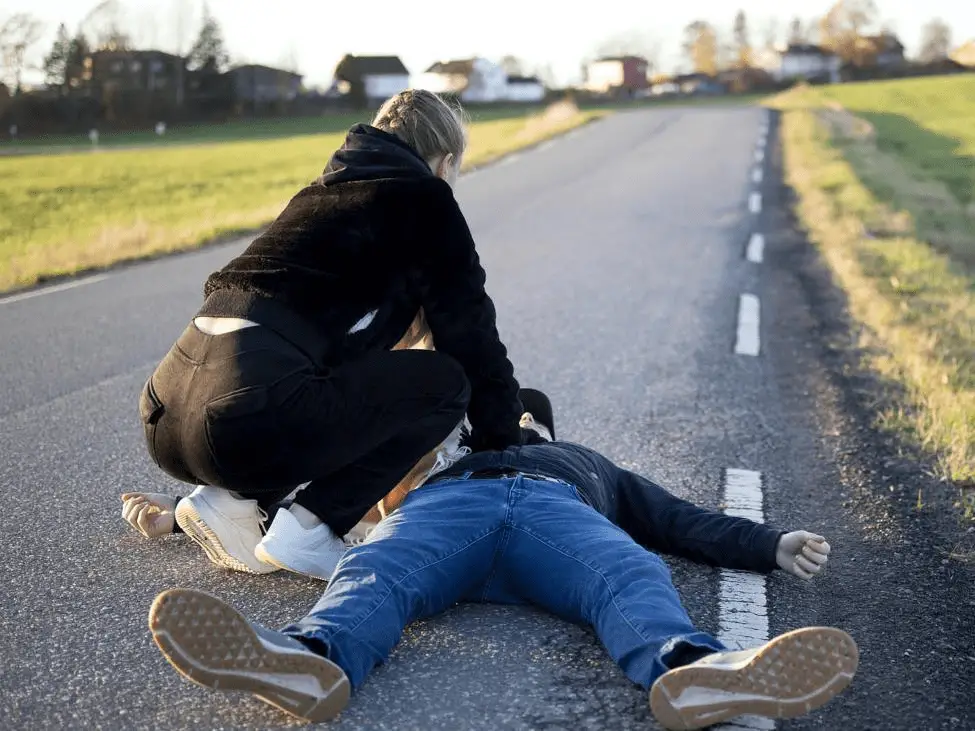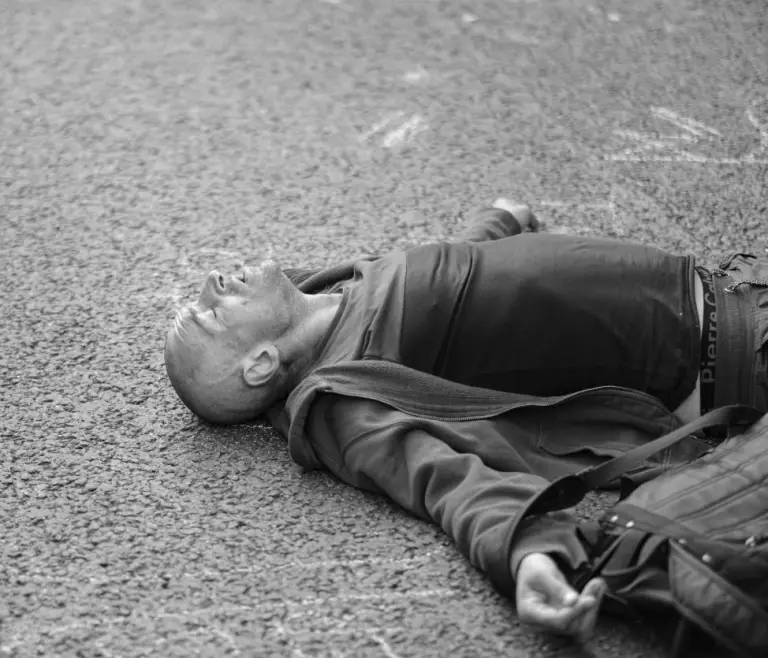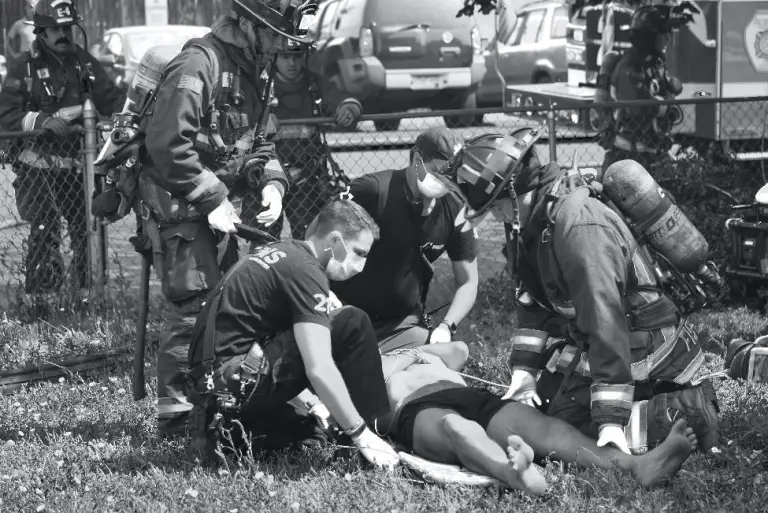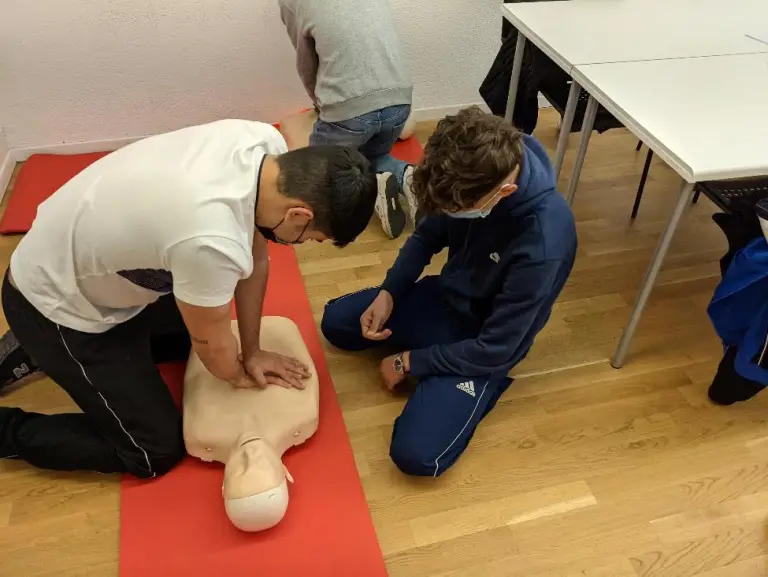It is no secret that CPR saves lives. According to the Canadian Red Cross, CPR doubles a cardiac arrest patient’s survival chances. However, performing CPR on someone who doesn’t need it can cause more harm than good. When performed unnecessarily, CPR can lead to damaged ribs and arrhythmia. It can also cause pain in the patient’s chest.
So without further ado, let’s take a detailed look at when you should administer CPR and why you should be careful:
When Should You Administer CPR?
Adrenaline rush, anxiety, and fear can make identifying the need for CPR challenging. But some signs explicitly call for CPR. Remembering these signs can help you pursue a rational approach, calm yourself, and analyze the need for administering CPR. These signs include:
1. No Pulse
Checking a patient’s pulse is easy. No pulse means no blood is pumped through the heart's blood vessels, meaning there is no heartbeat. CPR is essential in such a situation to keep the heart pumping and keep the body alive.
You must ensure that you are calm when you feel a pulse. If you are not calm, you may mistake your pulse for the patient’s. Courses like first aid level 1 Vancouver and OFA level 1 Vancouver can teach you how to stay calm and think and act rationally in emergencies.
2. The Patient Isn’t Breathing
A patient needs CPR if not breathing. If you feel anxious and aren’t sure you are feeling the pulse correctly, check for the patient’s breathing by placing two fingers in front of their nostrils. Alternatively, you can check the patient’s breathing before you feel their pulse as it either indicates no oxygen is being pumped throughout the body or the lack of heartbeat.
Try not to spend too long feeling the pulse or checking the patient’s breathing, as a lack of heartbeat for more than four minutes can cause irreparable damage to the brain.
3. Patient Is Unconscious
If a patient is unconscious or unresponsive, their heartbeat may be fading. Therefore, administering CPR in such a situation can prove more helpful than harmful.
4. Patient Is Gasping
We gasp when we are struggling to breathe. While a cardiac arrest patient may breathe for a few minutes after their heart stops, they can gasp during this period, thus identifying the need to administer CPR.
Besides cardiac arrest, some other situations that serve as signs of the need to administrate CPR include:
5. Victim Is Electrocuted
Electrocution sends the heart into cardiac arrest, making CPR an effective life-saving technique until help arrives.
6. Victim Nearly Drowned
CPR is almost always essential for nearly downed-victims. Even when a drowning person is rescued and pulled out of the water body, water is present in their lungs. The water in the lungs can block the flow of oxygen inhaled by the drowning person, stopping it from reaching the heart and sending it into a sudden arrest.
CPR for drowning victims helps their lungs push out the water, receive oxygen, and send it to their heart and through the heart to other parts of their body.
7. Patient Collapsed Suddenly
A sudden collapse mainly occurs due to seizures or heart problems. In any case, it can send the patient’s heart into arrest, arising the need for CPR. However, sudden collapse can also be simply fainting, which can happen due to various non-fatal medical reasons. So don’t forget to check the breath or feel the patient's pulse before CPR. Fall arrest training BC trains you to better help someone who
8. Drug Overdose
Drug overdose is more common among opioid users, but overdosing on prescribed medications is equally harmful. While drugs must only be taken as prescribed by a medical professional or, in the case of over-the-counter medicine, according to directions on the packaging, forgetfulness, carelessness, or addiction can lead to drug overdose and, ultimately, cardiac arrest.
If a person experiences dizziness, loss of balance, or chest pains or cannot respond while awake, it indicates a drug overdose and a need for CPR.
9. Victim Inhaled Smoke/Harmful Chemicals
Inhaling smoke or other harmful vaporized chemicals can lower the quantity of oxygen in the lungs and blood, leading to their hearts and organs receiving less than the required oxygen. The depravation of oxygen in the body causes a slow decline in the organs and leads to the failure of all organs, including the heart and brain.
Administering CPR is essential to ensure the survival of victims of smoke or other harmful chemical inhalants. But it is more important to remove them from where they inhaled toxic fumes or smoke and get them to a safe space first.
Completing courses such as first aid level 2 Vancouver, OFA level 3 training, and first aid level 3 courses can significantly help you prepare to help someone who has suddenly collapsed, overdosed, or inhaled harmful chemicals.
How Soon Should You Administer CPR after Determining Its Need?
The sooner you administer CPR after identifying its need, the more you can improve the chances of survival of the patient/victim. Quicker administration of CPR also reduces the risk of brain damage and damage to other organs, ensuring better health and life quality for the patient if they survive.
Call 911 before administering CPR if there is nobody else to help. If someone else is present, ask them to call 911 as you identify signs of the patient needing CPR.
Why Should You Be Careful When Administering CPR?
Administering CPR to save lives may seem like a decision that doesn’t require another thought. But it is vital to be careful when administering CPR and, in fact, more carefully before deciding to even help. This is because you can only save someone if you are alive and when you are safe yourself. Therefore, risking your own life in one way or another to help someone is never advised.
While there can be any number of events where you should be careful when administering CPR, here are some general possible situations:
● Dangerous Situations
Never put yourself in a dangerous situation, like a road accident, an electrocuted area, or a space filled with toxic fumes, to save someone else. If you are already involved in a situation where you see others collapsing, focus on your safety. Get to a safe space and out of danger. Do not go back to the dangerous situation to save others. Instead, call for help and stay out of harm’s way. Seek medical help to further ensure your safety and well-being.
Similarly, don’t get involved in a road accident on a busy or chaotic street. You can get hit and injured when reaching the injured victims, becoming unable to offer any help to others. Before trying to help someone, always ensure the situation is safe for you. If you cannot help, call 911 immediately and maintain a safe distance until help arrives.
● You Feel Unsure
Our gut is one of our best protectors; it always tells us when something is harmful. Don’t ignore your gut, including when someone requires your help.
It isn’t uncommon for criminals to target people, especially women and/or those who are traveling alone, by faking emergencies. Listen to your instincts, and don’t stop to help if the overall situation makes you feel unsure or if your gut says no. You can help people without risking your own safety by calling 911.
● The Patient/Victim Is Breathing Normally
In a safe situation when you can administer CPR, avoid doing so if the person appears to be breathing normally. However, call 911 to get help and keep an eye on the person so you can administer CPR if and when needed. Checking the pulse or breathing after every thirty seconds can help ensure you begin CPR as soon as possible and increase the person’s survival chances.
When Should You Stop Administering CPR?
Besides knowing when to administer CPR and why you should be careful about it is vital to know when to stop it. As mentioned in the beginning, CPR can do more harm than good when performed unnecessarily. This includes the circumstances when CPR was needed but stopped being a requirement. Here are some scenarios when you should stop administering CPR:
Patient/Victim Becomes Responsive
When the person you are helping becomes responsive, i.e., begins breathing normally or becomes conscious, you must stop administering CPR. It is a sign that you did your job well and doesn’t need to do it anymore.
The Satiation Becomes Unsafe
You must always prioritize your safety, whether it is before or during administering CPR. If, for any reason, the situation becomes unsafe, don’t continue to help when you can get hurt yourself. Get out of the dangerous situation. Do not try to drag or carry the person you were helping with you, as it will slow you down, risking your safety.
AED Becomes Available
An Automated External Defibrillator (AED) is much more effective in revising an unconscious person. It significantly increases the patient/victim’s survival chances compared to CPR, which too much quicker.
Emergency Help Has Arrived
Once emergency help has arrived, don’t stand in their way. Immediately stop giving CPR if they ask you. On the other hand, if the emergency personnel ask you to continue CPR as they ensure other measures, continue to administer CPR and follow any other instructions they may have for you.
You Feel Exhausted
CPR requires strength and mental clarity, which you may begin to lack after administering CPR for a while. When and if it happens, ask someone else present to take over you and guide them as you catch your breath. Continuing to administer CPR when you’re tired can cause mistakes, harming the person you’re trying to help.
Get CPR Training and Save Lives
Reading about when to perform CPR can only help so much; you must get trained in CPR to actually save lives. CPR training can be helpful at home, work, and even on the road. To sign up for the most thorough CPR training, contact Metro Safety.
Metro Safety is a first-aid training school offering various emergency care courses to help ensure safer communities. Click here to explore and sign up for their various courses, including CPR/AED training, first aid level 1 Vancouver, first aid level 2 Vancouver, first aid level 3, OFA level 3 training, confined space training BC, and fall arrest training BC.











